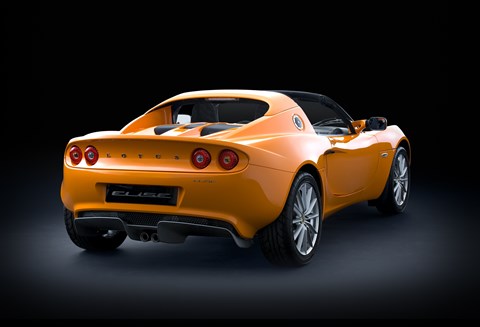► An ode to simple driving pleasures
► Gavin wants a return to simpler ways
► More does not normally = better
The old decade was almost over when I finally got to appreciate one of the supreme cars of the 2010s. At last, I did a long drive in an Alpine A110. Yes, I know it’s been on sale for almost two years and I know it’s been fêted by many. But apart from a short drive soon after launch, this wonderful French car had eluded me.
When Renault design director Laurens van den Acker showed me an early model I loved the look – so old-school Alpine, yet also so very modern. Note the ’60s touches: those faired headlamps and spotlights, the bonnet spine, the finely sculpted body sides and that low tail. The 1961 original, incidentally, was designed by Michelotti, also responsible for the BMW 2002 and the Triumph Herald; it weighed just 700kg.
I loved the concept, small, light and so driver focused. And I loved that a big multinational car company had the balls and sheer unbridled car enthusiasm to produce such a vehicle. A bespoke aluminium structure (bonded and riveted) mid-engine sports car which, apart from some switchgear and a perfectly worthy turbo 1.8 engine, had nothing mechanically in common with Clios, Capturs and Kadjars. Bravo, Renault!
More than any over-hyped hypercar, souped-up supercar or big-capacity GT, the A110 prioritises pure driving pleasure. It puts feel before figures, driving pleasure before power. It subscribes magnificently to the Colin Chapman adage that it’s better to subtract weight than add power: after all, lighter weight makes you faster everywhere. Top speed? Max power? Lap time round the ’Ring? Ils ne sont pas importants. Increasingly, with high-performance cars, these labels are the supreme measures of value. We’re in an arms race that dooms high-performance sports cars to motoring irrelevance. Most are too big and too powerful to be usable. They are marketed to sate drivers’ egos more than to satisfy driving enjoyment.

I’m far from alone in lamenting this. McLaren boss Mike Flewitt recently told me he’d love to sell a smaller and lighter sportster. But big headline numbers sell. Mike, I should add, is a fan of old Lotuses and owns three Elans as well as a ’61 Elite. These are surely the supreme examples of sports cars that put driving enjoyment first.
The Alpine is their spiritual heir. It is light, at 1100kg. That’s 300kg less than the 718 Cayman, its nearest rival. Lean and low-riding, it doesn’t need the stiff springs and wide tyres that jar ride quality and camouflage steering feel. Just as important, it feels light, as it dances daintily on its tyres, caressing the road surface, so sensitive, so agile, so connected. The feedback is delicious. It is more involving than the Cayman S, Porsche’s best driver’s car. (It’s also quicker to 60 despite having 100bhp less – but let’s not talk figures…) Suspension is by double wishbones, the optimal configuration, for the best camber control and tyre contact during cornering.
It is also small and feels it. It’s fun to drive at legal not licence-losing speeds. The A110 is designed for British B-roads, winding French D-roads and mountain passes: a small car designed for small roads. It is the most European of all modern sports cars, without the slightest nod to California or China, Russia or the Middle East. Its only export markets are Europhile countries such as Japan and Australia. Such laser-like European focus is the key to its appeal. Globalisation is partly why Europe’s sports cars are getting fat: they are designed as much for the wide boulevards of the New World as the Alpine passes of the Old, for luxury as much as litheness.
The roll-call of sports cars that emphasise pure driving pleasure over speed, while offering more than raw Caterham comfort, is short. There’s the Toyota GT86, the 718 Cayman, Lotus’ evergreen Elise and Mazda’s marvellous MX-5, 30 years old last year and never better than in its latest Mk4 iteration. The Elise and MX-5 are ongoing reminders of that endangered and wonderful breed of car, the small roadster, that has long prioritised pint-sized driving enjoyment and at which, like dear old Britannia herself, the UK once ruled the world.
More opinion pieces by Gavin Green